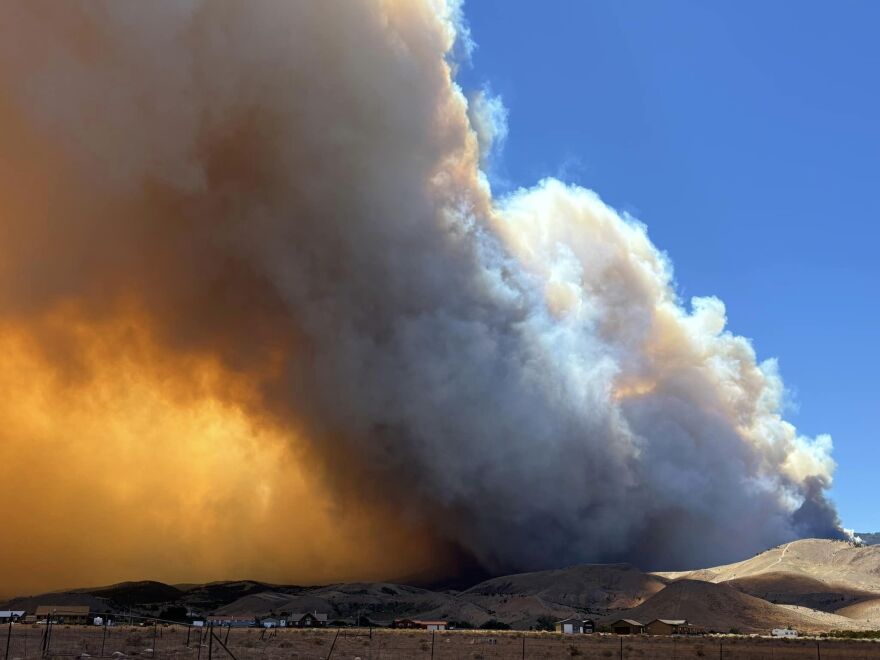The bill, titled the Fix Our Forests Act, was introduced Thursday by Sens. John Curtis, R-Utah, John Hickenlooper, D-Colo., Tim Sheehy R-Mont., and Alex Padilla D-Calif. to “combat catastrophic wildfires, restore forest ecosystems, and make federal forest management more efficient and responsive,” according to a news release.
“After months of bipartisan cooperation and consensus-building, my colleagues and I are introducing comprehensive legislation to support forest health, accelerate restoration, and equip local leaders — from fire chiefs to mayors — with the tools and data they need to protect lives, property, and landscapes,” Curtis said in the release.
The U.S. House version of the bill, sponsored by Rep. Bruce Westerman, R-Ark., passed the House in January. The legislation designates the top 20% of the landscape areas where wildfires are likely to spread and impact communities, including tribal areas, as so-called Fireshed Management Areas. The areas would be selected based on factors including risks to communities and to municipal watersheds.
It would also establish the Wildfire Intelligence Center, an office within the U.S. departments of Agriculture and Interior, which would work like the National Weather Service, a sort of “national hub for wildfire intelligence, prediction, coordination, and response,” according to a summary of the bill.
However, environmental advocates worry that the bill would “stifle citizen voices, remove science from land management decisions, and facilitate a large-scale rollback of the Endangered Species Act (ESA), National Historic Preservation Act, and National Environmental Policy Act on millions of acres of federal land,” according to a news release from Earthjustice.
Blaine Miller-McFeeley, senior legislative representative at Earthjustice, said the proposal doesn’t invest in proven wildfire prevention. Instead of funding and staffing key agencies, it “would codify the Trump administration’s attacks on our national forests and open the door for the timber industry to recklessly log our forests under the guise of forest management,” Miller McFeeley said in the release.
The bill includes easing some regulations to control vegetation on federal lands, allowing electric utilities with permits on National Forest System or Bureau of Land Management land to remove vegetation near power lines without requiring a separate timber sale. And, it propels advancing innovations on biochar, a carbonized biomass that according to a Utah State University article, has the potential to moderate wildfires and limit the amount of greenhouse gases released when hazardous fuels burn.
According to the environmentalists — who have also criticized the Trump administration’s executive order proposing expanding timber production on public lands — the senators’ bill would “open millions of acres of federal land to logging without scientific review and community input — potentially increasing the risk of wildfires.”
Additionally, the bill also contains provisions to expand the country’s toolkit to reduce wildfire risk, and other actions to restore forestry, such as extending the time of the Healthy Forests Restoration Act of 2003, a stewardship contract, from 10 years to 20. It also raises the cap on Collaborative Forest Landscape Restoration Program awards from $4 million to $8 million.
Beyond wildfire prevention and forestry management, the legislation would ensure federal assistance for firefighters who are injured or killed in the line of duty, offering a program to help their next of kin with notifications, travel reimbursement, case management for survivors and centralized access to benefits.
The proposal comes after the Utah Wildfire Annual Report indicated a 54% increase of wildfires over a year. Nationwide that spike was of 231%, with nearly 9 million acres burning in 2024.
Utah Gov. Spencer Cox expressed support for the legislation, arguing that decades of reduced forest management have left the country with unhealthy, overgrown forests that are more vulnerable to catastrophic wildfires. He also referred to a provision from the bill directing the secretaries in charge of the program to evaluate opportunities to establish wildfire-resistant structures and communities using different materials, including mass timber.
“The Fix Our Forests Act, along with the tools provided by President Trump’s executive order, will help us actively manage our forests — protecting our watersheds, improving wildlife habitat, reducing wildfire risk, and providing the timber we need to build strong homes and neighborhoods,” Cox said in the release.
This report was originally posted at UtahNewsDispatch.com.

